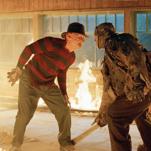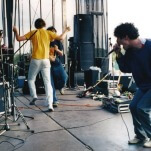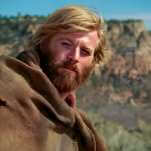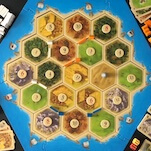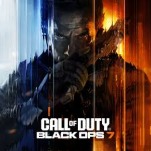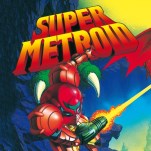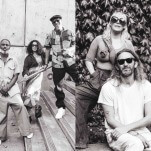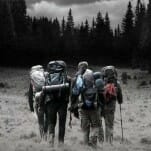Catching Up With Battles’ John Stanier
When Battles released Gloss Drop in 2011, the brilliance of the music on it was somewhat overshadowed by the news that founding member Tyondai Braxton, the guy whose squirrelly, pitch-shifted vocals drove the group’s breakout track “Atlas,” was leaving the group. The rest of the group—drummer John Stanier and multi-instrumentalists Ian Williams and Dave Konopka—somewhat compensated for the loss by inviting a batch of singers to help flesh out their groove-heavy experiments, but the songs and their subsequent live shows proved the three could ably stand on their own.
That feeling is amplified on the trio’s latest album, La Di Da Di. Anchored by an intelligent use of looping technology, the 12 songs are opaque and busy in the manner of the best experimental electronic music with Williams and Konopka heaping on modular synth lines and processed noise among their guitar and bass splatters. And as ever, holding everything in check are Stanier’s vicious breakbeats and tasteful percussive touches.
We caught up with Stanier in one of his rare moments of downtime to pick his brain about how La Di Da Di was written, how the band’s heated live shows are put together, and how he progresses as a musician from album to album and project to project.
Paste: When I heard the new album, it put Gloss Drop in a new light for me. It feels now like that was your transitional statement, with you three moving away from having Tyondai in the group but still incorporating vocals into the mix. Now with La Di Da Di, it is as if you’re fully committed to being a trio.
John Stanier: Sure, I would say that. It’s much more relaxed this time around. We were much more prepared. We did tons of pre-production. It took a long time to write this record, but we were still way more prepared. We knew what we were doing and it wasn’t as jarring as all of the sudden becoming a trio. We had toured for almost two years for Gloss Drop and gotten a little more used to being a three-piece.
Paste: What does pre-production mean for you? I know Dave and Ian are making loops and working on the roots of songs on their own, but what are you doing ahead of time?
Stanier: A lot of it is me playing by myself. This record was written in spurts. We would get together and bounce ideas off of each other. Then we would go away. I live in Berlin, so a lot of this record was written with everyone by themselves. When I say pre-production, overall, the last record we wrote in the studio from scratch. It took us almost nine months. This time around, everything was pretty much composed.
Paste: In the songwriting, are you driving many of the songs with your playing or are you simply reacting to what the other two guys have cooked up?
Stanier: I’d say this particular record it’s more of a reaction. A Battles song can be written starting with any and all kinds of ideas. It can start with a drum beat. There were definitely songs on Mirrored that were started with a drum beat. This time around, nine times out of 10, it was the original, master loop that someone will bring to the table. Then of course everyone rips it apart and twists and turns it and takes it from there. It’s never one person coming with a completed song. That never happens. We’re not that kind of band.
-

-

-

-

-

-

-

-

-

-

-

-

-

-

-

-

-

-

-

-

-

-

-

-

-

-

-

-

-

-

-

-

-

-

-

-

-

-

-

-


